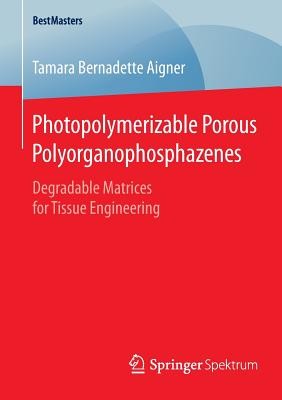
- We will send in 10–14 business days.
- Author: Tamara Bernadette Aigner
- Publisher: Springer Spektrum
- Year: 2015
- Pages: 75
- ISBN-10: 3658093196
- ISBN-13: 9783658093198
- Format: 14.8 x 21 x 0.6 cm, minkšti viršeliai
- Language: English
- SAVE -10% with code: EXTRA
Photopolymerizable Porous Polyorganophosphazenes (e-book) (used book) | bookbook.eu
Reviews
Description
Tamara Bernadette Aigner designed a set of biocompatible and biodegradable poly(organophosphazenes). In order to tailor their biological and chemical properties, she further modified these macromolecules by adding functional moieties via thiol-ene chemistry. The author used the same photochemistry for crosslinking to obtain a mechanically stable network. She further altered the degradation rate of the matrix as well as the mechanical properties by adding blending agents and created a porous matrix, which is necessary for cell invasion and communication, by a newly developed photocrosslinking particulate-leaching method. Thus, a modular hybrid system was established which is able to adapt to different microenvironments based upon tissue type.
EXTRA 10 % discount with code: EXTRA
The promotion ends in 21d.21:08:56
The discount code is valid when purchasing from 10 €. Discounts do not stack.
- Author: Tamara Bernadette Aigner
- Publisher: Springer Spektrum
- Year: 2015
- Pages: 75
- ISBN-10: 3658093196
- ISBN-13: 9783658093198
- Format: 14.8 x 21 x 0.6 cm, minkšti viršeliai
- Language: English English
Tamara Bernadette Aigner designed a set of biocompatible and biodegradable poly(organophosphazenes). In order to tailor their biological and chemical properties, she further modified these macromolecules by adding functional moieties via thiol-ene chemistry. The author used the same photochemistry for crosslinking to obtain a mechanically stable network. She further altered the degradation rate of the matrix as well as the mechanical properties by adding blending agents and created a porous matrix, which is necessary for cell invasion and communication, by a newly developed photocrosslinking particulate-leaching method. Thus, a modular hybrid system was established which is able to adapt to different microenvironments based upon tissue type.


Reviews